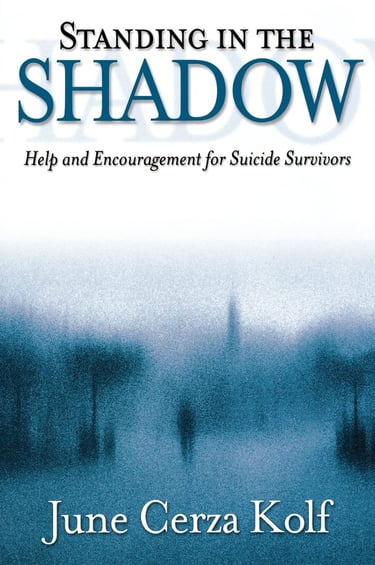Thank you to our sponsors and supporters
February 2025 Newsletter
This edition discusses how to explore your feelings safely and how to cope
NEWSLETTERS
2/15/20254 min read
Fear and feelings
As many of you know, the organization has been working on compiling resources for you. This includes a lending library, community information and referrals, and different assistance programs that may aid you. We are still working on the best way to sort this out and make it accessible. For now, feel free to check out our website by clicking the image below, and if you need help finding more information, send us an email at saskatoonsuicidegrief@gmail.com
Suicide Grief Support Saskatoon Inc.
24/7 Help
These resources are helplines available 24/7 to help you get through this difficult time.
9-8-8 is a national suicide and mental health crisis line. You don’t have to be suicidal to call. For more information click here.
988
For those of you based in Saskatoon, there is a service offered called Mobile Crisis - someone will take your call and work with you through the thoughts. For more information, click here.
306-933-6200
Saskatoon Mobile Crisis
The Hope for Wellness Helpline is available to all Indigenous people across Canada. Experienced and culturally aware counsellors are reachable by telephone and online chat 24/7. For more information click here.
Hope for Wellness
1-855-242-3310
This line is a dedicated line for veterans to use. It’s a part of the 9-8-8 initiative, if you’d like to call rather than text, call 988 and dial 1. For more information click here.
Text 838255
Veterans Line
Book of the Month
Standing in the Shadow - Help and Encouragement for Suicide Survivors
Grief counselor June Cerza Kolf is repeatedly asked for specific guidance in helping suicide survivors function and heal. Their grief is unique in that the trauma of suicide leaves them in such a devastated state that the typical coping mechanisms no longer work.
With deep sensitivity, Kolf leads readers through mourning to acceptance. She helps them realize the tragedy was out of their control, release their guilt and anger, and gain the power of prayer. Standing in the Shadow covers the heart of thirty-four topics, including depression, forgiveness, and the salvation of those who commit suicide. The gentle, honest writing provides answers, hope, and comfort for the bereaved.


In the Meantime…
Needing more help is okay.
Grief doesn’t stop. It doesn’t only appear once a month. It’s an everlasting thing. In addition to our meetings, there are many online groups you can look at attending. Some may be specified to suicide, others may not. Here is a site that lists grief groups online.
These may not be specific to suicide
Suggestions? Feedback?
We are always looking for more information and resources. Please feel free to fill out this form:
https://forms.gle/Efe2Mb9cCrbDxXHJ8
MYTH #1: The pain will go away faster if you ignore it.
MYTH #2: It’s important to “be strong” in the face of loss.
MYTH #3: If you don’t cry, it means you aren’t sorry about the loss.
MYTH #4: Grief should last about a year
Fact: There is no right or wrong time frame for grieving. How long it takes can differ from person to person.
Fact: Feeling sad, frightened, or lonely is a normal reaction to loss. Crying doesn’t mean you are weak. You don’t need to “protect” your family or friends by putting on a brave front. Showing your true feelings can help them and you
Fact: Trying to ignore your pain or keep it from surfacing will only make it worse in the long run. For real healing to occur, it is necessary to face your grief and actively deal with it.
Fact: Crying is a normal response to sadness, but it’s not the only one. Those who don’t cry may feel the pain just as deeply as others. They may simply have other ways of showing it.


Let's debunk the myths!















